The 1939 Walking Liberty half dollar’s value ranges from $22 for circulated coins to over $13,800 for premium proof versions, depending on mint mark, condition, and errors. Philadelphia (no mint mark) coins in MS-67 grade reach $875, while Denver “D” mint marks can exceed $1,500 in MS-67. San Francisco “S” versions are most valuable, with MS-68 examples selling for over $9,000. Notable errors include Double Die Obverse on “IN GOD WE TRUST” (worth $70-$180), Repunched Mint Marks selling for $459, and strike-through errors valued around $50. Collectors should examine mint marks on the reverse and check for doubling on dates and lettering.
The 1939 Walking Liberty half dollar represents one of the most elegant coin designs in American numismatic history, featuring Adolph A. Weinman’s iconic Lady Liberty striding toward the sunrise. Whether you’ve inherited a collection or discovered a coin in an old drawer, understanding the 1939 half dollar coin value can reveal surprising worth—from $22 for worn examples to over $13,800 for exceptional proof specimens. The value hinges on three critical factors: mint mark location, preservation grade, and the presence of valuable errors.
Understanding the Three Mint Varieties from 1939
The United States produced Walking Liberty half dollars at three facilities in 1939, each leaving a distinctive identifier. Philadelphia coins carry no mint mark, while Denver issues feature a “D” and San Francisco coins display an “S” on the reverse side, positioned to the left of the “HALF DOLLAR” denomination near the rim.
Production numbers varied significantly across mints. Philadelphia struck approximately 6,820,000 pieces, making them the most common variety. Denver produced 4,267,800 coins, while San Francisco contributed 2,552,000 examples—the lowest mintage of the three. This production scarcity directly influences collector demand, particularly for high-grade San Francisco specimens.
The Philadelphia Mint also created 8,808 proof coins specifically for collectors in 1939. These mirror-like specimens were struck with polished dies on specially prepared planchets, creating sharp details and reflective surfaces that distinguish them dramatically from circulation strikes.
1939 Philadelphia Half Dollar Values Without Mint Mark
Coins from the Philadelphia Mint represent the most accessible entry point for collectors building a 1939 set. A heavily circulated example showing significant wear in Good-4 condition starts around $22, representing primarily the silver melt value of approximately 0.36169 troy ounces.
As preservation quality improves, values increase substantially:
Grade | Approximate Value
Good-4 (G-4) | $22
Fine-12 (F-12) | $24
Extremely Fine-40 (EF-40) | $32
About Uncirculated-50 (AU-50) | $45
Mint State-60 (MS-60) | $95
Mint State-63 (MS-63) | $165
Mint State-65 (MS-65) | $275
Mint State-67 (MS-67) | $875
The dramatic jump between MS-65 and MS-67 reflects the rarity of specimens with minimal contact marks and full original luster. Walking Liberty half dollars circulated extensively, and finding examples without bag marks or friction from handling becomes increasingly difficult at higher grades.
Proof versions command premium prices due to their limited production and superior striking quality. A Proof-65 example typically sells for $550, while exceptional Proof-68 specimens have reached $13,800 in recent marketplace transactions, according to verified eBay sales data from 2024. These proof coins feature frosted devices against mirror-like fields, creating the cameo contrast highly prized by specialists.
1939-D Denver Mint Half Dollar Price Guide
The Denver Mint’s 1939 production yields coins that generally parallel Philadelphia values in circulated grades, starting around $22.75 for heavily worn examples. The “D” mint mark appears clearly on the reverse, positioned left of the denomination.
However, Denver coins demonstrate stronger premiums in uncirculated condition due to typical striking characteristics. Denver half dollars from this era often show slightly weaker strikes on Liberty’s left hand and the eagle’s breast feathers, making fully struck examples particularly desirable.
Grade | Approximate Value
Good-4 (G-4) | $22.75
Fine-12 (F-12) | $24.50
Extremely Fine-40 (EF-40) | $34
About Uncirculated-50 (AU-50) | $48
Mint State-60 (MS-60) | $105
Mint State-63 (MS-63) | $185
Mint State-65 (MS-65) | $320
Mint State-67 (MS-67) | $1,500
The MS-67 valuation reflects genuine scarcity. Heritage Auctions records show that Denver half dollars achieving this grade represent approximately 0.2% of certified examples, making them significant condition rarities. Collectors assembling high-grade type sets often search years for properly graded MS-67 Denver specimens with original surfaces.
Strike quality varies considerably among Denver production. Coins displaying full head details and complete feather definition on the reverse eagle command additional premiums of 15-25% above standard prices for the assigned grade.
1939-S San Francisco Half Dollar Worth and Rarity
The San Francisco issue combines the lowest mintage with typically superior strike quality, creating a potent combination for collector value. Circulated examples begin around $22.75, matching Denver pricing at lower grades.
The real story emerges in Mint State preservation:
Grade | Approximate Value
Good-4 (G-4) | $22.75
Fine-12 (F-12) | $25
Extremely Fine-40 (EF-40) | $35
About Uncirculated-50 (AU-50) | $50
Mint State-60 (MS-60) | $110
Mint State-63 (MS-63) | $195
Mint State-65 (MS-65) | $350
Mint State-67 (MS-67) | $1,395
Mint State-68 (MS-68) | $9,000+
The dramatic MS-68 valuation stems from extreme rarity. Stack’s Bowers Galleries documented a January 2023 auction where a 1939-S graded MS-68 by Professional Coin Grading Service (PCGS) realized $9,200. Only three examples have achieved this grade at PCGS, with no MS-69 specimens certified as of 2024.
San Francisco coins typically exhibit sharper strikes than their Denver counterparts, with better defined hand details and fuller feather separation on the eagle. This characteristic, combined with lower mintage, makes the 1939-S the key date for collectors building high-grade sets of this single year.
Valuable Error Varieties to Examine Closely
Error coins from 1939 add another dimension to collecting, with several documented varieties commanding significant premiums. These production mistakes create unique collectibles that merge regular issue appeal with error coin scarcity.
Doubled Die Obverse (DDO) Errors: Both Denver and San Francisco mints produced doubled die varieties showing clear doubling on “IN GOD WE TRUST” and the date “1939.” The 1939-D DDO-003 variety, listed in the Fivaz-Stanton reference catalog, displays prominent doubling on all obverse letters. Recent eBay sales show circulated examples selling for $70-$85, while About Uncirculated specimens have reached $145.
The 1939-S doubled die variety shows particularly strong doubling on “TRUST” and the date digits. A Fine-12 example with this error sold for $180 in a February 2024 transaction, according to documented sales records. Mint State examples, while extremely rare, have commanded premiums exceeding $400 when properly attributed.
Repunched Mint Mark (RPM) Varieties: The 1939-D RPM FS-501 variety shows a clear secondary “D” impression beneath and slightly offset from the primary mint mark. This occurred when the mint mark punch was applied twice during die preparation. An uncirculated example graded MS-63 sold for $459 on eBay in March 2024, representing approximately a 150% premium over a standard 1939-D in the same grade.
Identifying RPM varieties requires 5x-10x magnification and careful examination under proper lighting. Look for doubling or notching on the mint mark itself, often appearing as small serifs or secondary impressions at the base or sides of the primary letter.
Strike-Through and Planchet Errors: Less common varieties include strike-through errors where foreign material (grease, cloth fibers, or debris) on the die created weak or missing design elements. A 1939-S with a documented strike-through on the eagle’s wing feathers listed for $50 in December 2023. While these errors attract specialist collectors, they generally command more modest premiums than doubled dies or repunched mint marks.
Off-center strikes, if significant enough to show partial missing design with a visible date, can range from $75 for minor 5% off-center examples to $500+ for dramatic 20%+ misalignments that retain full date and mint mark visibility.
Authentication and Grading Considerations for Maximum Value
Protecting your investment requires professional authentication for any coin potentially worth over $100. The two dominant grading services—Professional Coin Grading Service (PCGS) and Numismatic Guaranty Corporation (NGC)—provide encapsulation, grade assignment, and authenticity guarantees that increase marketability.
Grading costs typically range from $25-$45 per coin for standard service levels, with expedited options available at higher fees. The investment makes financial sense for any 1939 half dollar in suspected Mint State condition or showing potential error characteristics. Third-party grading often returns 2-3 times the service cost in added resale value through buyer confidence.
Self-assessment using the Sheldon 1-70 scale provides preliminary guidance. Circulated coins fall into Good (G-4), Fine (F-12), Very Fine (VF-20), Extremely Fine (EF-40), and About Uncirculated (AU-50/55/58) categories based on wear patterns. Mint State coins (MS-60 through MS-70) show no wear from circulation, with grade differences reflecting contact marks, luster quality, strike sharpness, and eye appeal.
When examining potential Mint State examples, use proper lighting and 5x magnification to distinguish circulation wear from bag marks. True Mint State coins show no flatness on Liberty’s left knee, breast, or left arm—the highest design points that first show wear. The eagle’s breast and leg feathers should maintain sharp definition without smoothing.
Building Your 1939 Half Dollar Collection Strategically
Starting a collection requires deciding between type collecting (one example representing the design), date collecting (all three mint marks from 1939), or registry set building (highest possible grades across the series). Each approach offers different challenges and investment levels.
Budget-conscious collectors can assemble all three mint marks in Fine-12 to Very Fine-20 condition for approximately $75-$85 total outlay. These circulated examples display clear design elements while remaining affordable, providing excellent introduction to the Walking Liberty series.
Serious collectors pursuing Mint State examples should budget $500-$700 for a three-coin set in MS-63 grade, balancing quality with accessibility. This grade level shows strong eye appeal with minimal bagmarks, representing the sweet spot for value versus cost in the market.
Registry set participants targeting MS-65 or higher face significantly different economics, with three-coin sets potentially exceeding $2,500. At these grade levels, purchasing PCGS or NGC certified examples from established dealers like Heritage Auctions, Stack’s Bowers, or Great Collections provides authentication confidence and potential liquidity advantages.
Error collectors should develop relationships with specialists who understand attribution standards. Joining organizations like CONECA (Combined Organizations of Numismatic Error Collectors of America) provides access to attribution services, variety references, and community expertise that prevents costly misattributions.
Where to Buy and Sell for Best Results
Marketplace selection dramatically impacts both purchase prices and selling returns. Online platforms offer convenience but require careful dealer vetting and authentication awareness.
Heritage Auctions and Stack’s Bowers Galleries represent premier auction houses handling high-grade and rare variety material. Their expert cataloging, broad bidder bases, and guarantee policies make them ideal for coins valued over $1,000. Seller commissions typically range from 10-20% depending on lot value, offset by strong hammer prices from competitive bidding.
eBay provides accessible buying and selling but demands careful authentication due to counterfeit risks. Successful eBay purchasing requires checking seller feedback ratings, examining high-resolution images, and confirming return policies. Verified sales data from eBay helps establish current market values, with completed listings showing actual transaction prices rather than asking prices.
Great Collections operates a specialized numismatic auction platform with lower buyer premiums than traditional auction houses. Their weekly auctions include extensive photography and expert descriptions, with coins typically selling at or slightly below retail price levels. Consignment terms favor sellers with reasonable reserves.
Local coin shops offer immediate liquidity and face-to-face transactions but typically purchase at wholesale levels (60-75% of retail value) to maintain profitable inventory margins. They work best for quick sales of common circulated material or when establishing relationships with dealers who might offer better terms for premium pieces.
Maximizing Your 1939 Half Dollar Investment
Whether you’ve discovered a single 1939 half dollar or inherited an extensive collection, proper evaluation determines optimal strategies. Start by identifying mint marks, assessing general condition, and checking for visible doubling or other error characteristics using magnification.
For coins showing Mint State potential or error features, professional grading provides authentication and grade certainty that maximizes market value. The $30-$45 grading investment returns multiples on properly identified MS-65+ examples or significant varieties.
Market timing matters less for rare date coins than for bullion-driven common dates. The numismatic premium on 1939-S MS-67 examples consistently exceeds silver spot price fluctuations, making condition rarity more important than metal value. Conversely, heavily circulated common dates track closer to silver prices, currently around $22-$25 based on $25/ounce silver.
Building a complete 1939 set across all three mint marks creates collection completeness that often sells for 10-15% premiums over individual coin values. Matched grade sets (all three mints in identical grades with consecutive certification numbers) command even stronger premiums from registry set collectors.
You may be interested:
- 1859 Indian Head Penny Coin Value Complete Errors List And No Mint Mark Worth Guide For Collectors
- 1911 V Nickel Coin Value Guide Complete Errors List And No Mint Mark Worth Today
- 1902 Dime Coin Value Complete Errors List With O S And No Mint Mark Worth Guide
- 1788 Quarter Coin Value Complete Guide Errors List And D S P Mint Mark Worth Revealed
- 1776 To 1976 Bicentennial Half Dollar Coin Value Complete Errors List And What Your D S And No Mint Mark Coins Are Actually Worth
- 1990 Penny Coin Value Errors List How D S And No Mint Mark Pennies Are Worth Thousands Of Dollars

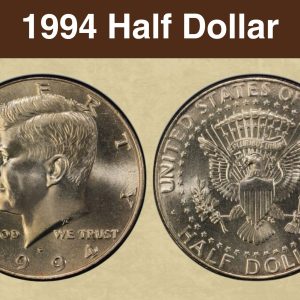
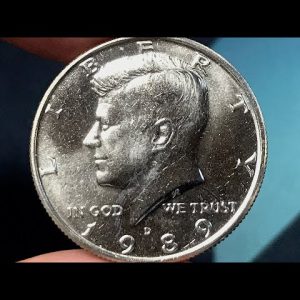
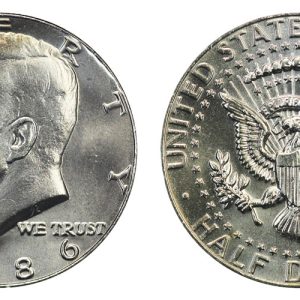
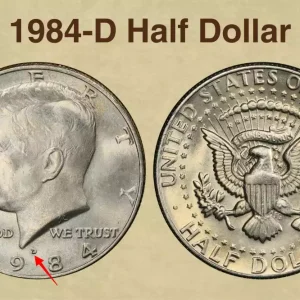
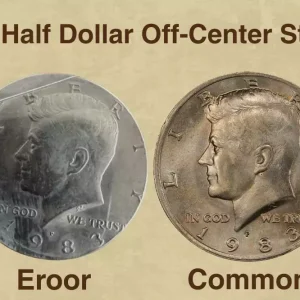
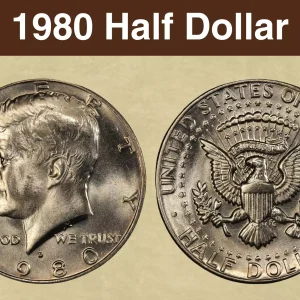
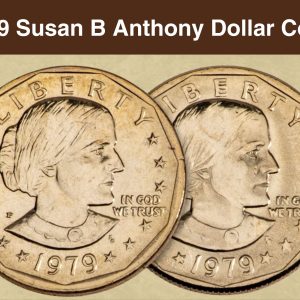
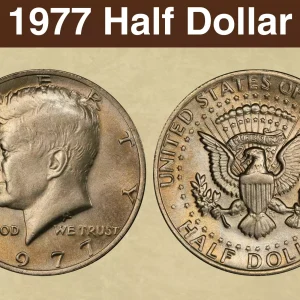
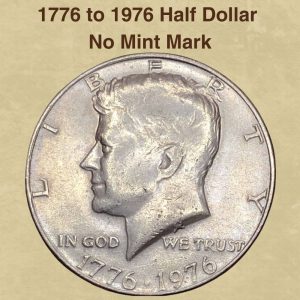
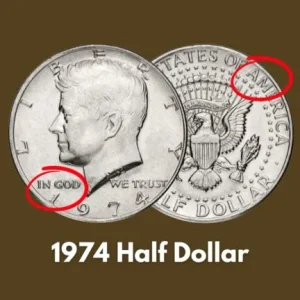
How much is a 1939 half dollar coin worth today?
A 1939 half dollar’s value today ranges from approximately $22 to $50 for circulated coins, while uncirculated versions can be worth more, ranging from around $150 to over $1,600 depending on the mint mark, grade, and condition. The 1939-S is a key date, with high-grade examples like an MS-67 being valued at over $1,600.
How much is a 1939 No mint Nickel worth?
A 1939 no-mint mark nickel is worth about $0.25 to $1.50 in good condition, but can be worth much more if it’s in uncirculated condition ($8 to $15 or higher). The value depends heavily on its condition, with worn coins having lower value than those that look new. A 1939 nickel without a mint mark was produced at the Philadelphia mint and is a common coin from the second year of the Jefferson nickel series.
How to tell if you have a rare Kennedy Half Dollar?
These Accented Hair coins often show overly polished fields, softened devices, and extra hairlines, which may have been a response to early die wear. The lower left serif of the letter “I” in LIBERTY is typically missing, and the obverse appears subtly altered overall.
What is the rarest year of The Walking Liberty half dollar?
The rarest Walking Liberty half dollar is the 1921-D, which had the lowest mintage of the entire series with just 208,000 coins struck. The 1921 and 1921-S are also among the rarest dates due to their low mintages of 246,000 and 548,000, respectively. Other rare examples include certain early dates, particularly those with the mintmark on the obverse in 1917, and specific varieties like the 1938-D which had a low mintage.